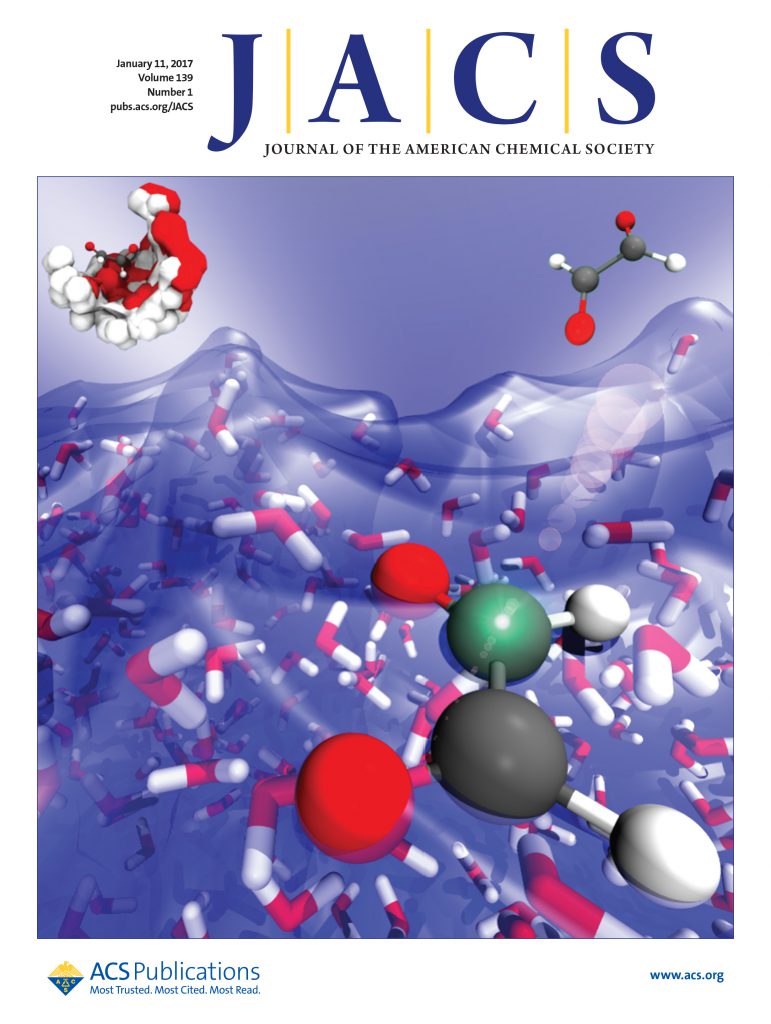无约束 C(sp3)-C(sp3)键的不对称氨基化
IF 14.4
1区 化学
Q1 CHEMISTRY, MULTIDISCIPLINARY
引用次数: 0
摘要
对未受约束的 C(sp3)-C(sp3)键进行不对称官能化可以成为立体选择性地重构有机化合物骨架的有力策略,但这种反应并不多见。虽然烯丙基取代反应经常被用于通过过渡金属裂解活性更高的 C-X 键(X 通常是酯的 O 原子)来构建 C-C 键,但用 C- 异原子键取代 C-C 键的反向过程却很少见,而且通常被认为在热力学上是不利的。我们的研究表明,通过设计的溶解度控制策略,可以将未受约束的惰性烯丙基 C-C σ 键立体选择性地转化为 C-N 键,从而使热力学上不利的过程成为可能。C-C 键氨基化可与一系列胺类亲核物发生,并以良好的产率和较高的对映选择性裂解多种类型的烷基 C-C 键。报告还介绍了一种新颖的解析策略,通过 C-N 键到 C-C 键再到 C-N 键的顺序转换,将外消旋烯丙基胺转化为相应的光学活性烯丙基胺。机理研究表明,C-N 键的形成是限速步骤,其驱动因素是裂解烷基形成的盐在非极性溶剂中的低溶解度。本文章由计算机程序翻译,如有差异,请以英文原文为准。

Asymmetric Amination of Unstrained C(sp3)–C(sp3) Bonds
The asymmetric functionalization of unstrained C(sp3)–C(sp3) bonds could be a powerful strategy to stereoselectively reconstruct the backbone of an organic compound, but such reactions are rare. Although allylic substitutions have been used frequently to construct C–C bonds by the cleavage of more reactive C–X bonds (X is usually an O atom of an ester) by transition metals, the reverse process that involves the replacement of a C–C bond with a C–heteroatom bond is rare and generally considered thermodynamically unfavorable. We show that an unstrained, inert allylic C–C σ bond can be converted to a C–N bond stereoselectively via a designed solubility-control strategy, which makes the thermodynamically unfavorable process possible. The C–C bond amination occurs with a range of amine nucleophiles and cleaves multiple classes of alkyl C–C bonds in good yields with high enantioselectivity. A novel resolution strategy is also reported that transforms racemic allylic amines to the corresponding optically active allylic amine by the sequential conversion of a C–N bond to a C–C bond and back to a C–N bond. Mechanistic studies show that formation of the C–N bond is the rate-limiting step and is driven by the low solubility of the salt formed from the cleaved alkyl group in a nonpolar solvent.
求助全文
通过发布文献求助,成功后即可免费获取论文全文。
去求助
来源期刊
CiteScore
24.40
自引率
6.00%
发文量
2398
审稿时长
1.6 months
期刊介绍:
The flagship journal of the American Chemical Society, known as the Journal of the American Chemical Society (JACS), has been a prestigious publication since its establishment in 1879. It holds a preeminent position in the field of chemistry and related interdisciplinary sciences. JACS is committed to disseminating cutting-edge research papers, covering a wide range of topics, and encompasses approximately 19,000 pages of Articles, Communications, and Perspectives annually. With a weekly publication frequency, JACS plays a vital role in advancing the field of chemistry by providing essential research.

 求助内容:
求助内容: 应助结果提醒方式:
应助结果提醒方式:


